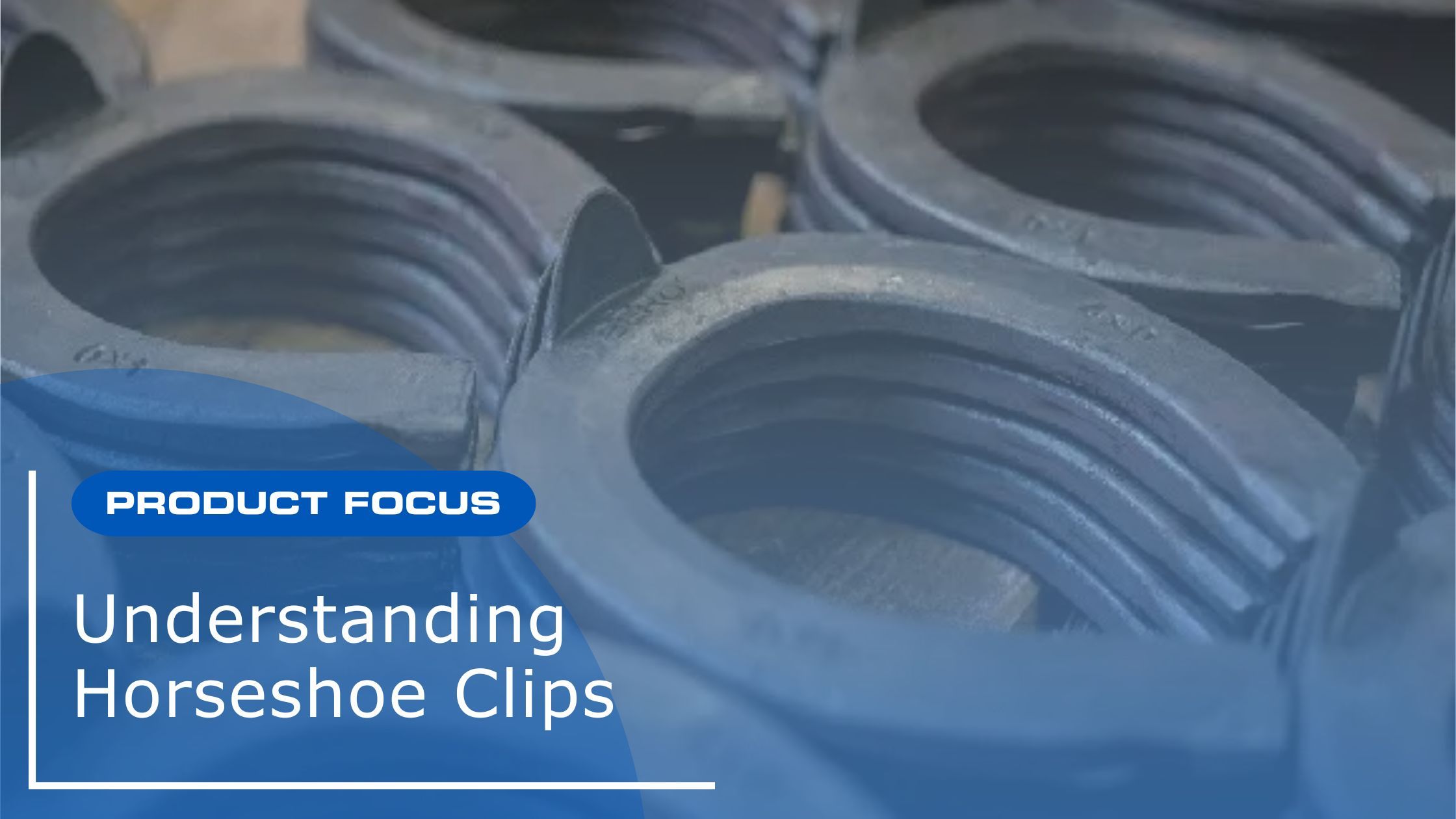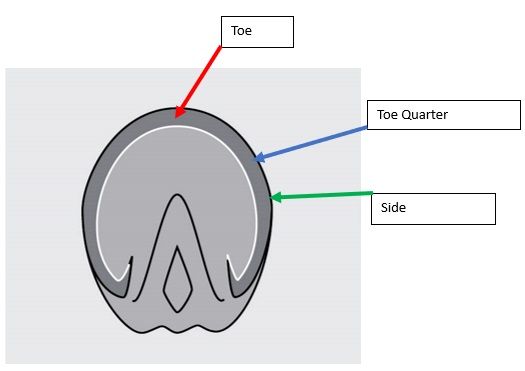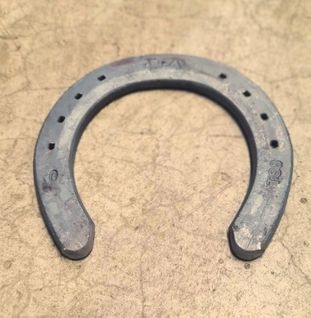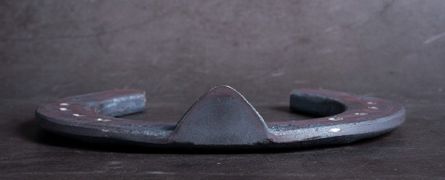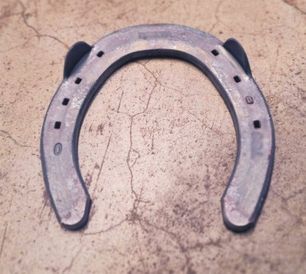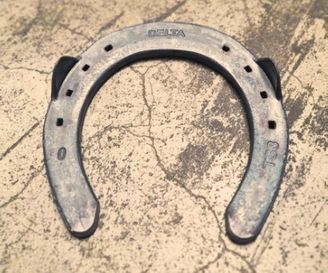Understanding Horseshoe Clips
Understanding Horseshoe Clips
With the wide range of horseshoes available to hoof care professionals today, selecting the right shoe and clip combination for each horse can be a challenging task!
Many people taking up horseshoeing today argue that with the wide variety of products available, farriers no longer need to know how to make or modify horseshoes.
While that may be the case, one thing I know for sure is that, to properly shoe a horse, a farrier must have a solid understanding of the products they choose, as well as the correct application of those products.
When selecting horseshoes, we naturally choose the product that best suits the breed or discipline we’re working with. This involves several considerations, including stock size and width, nail placement, and clip position.
Any time we shoe a horse, we modify the horse shoe by shaping it to the horse’s foot.
So even if we have negated the necessity of making horse shoes by hand, we still as farriers should have the skills to modify any horse shoe as required. Without doubt the most common form of modification to a horse shoe is pulling a clip where it is needed.
Types of Horseshoe Clips:
Quite simply we usually describe clips on horse shoes by locality on the hoof or shoe.
- Unclipped: Is exactly as it sounds, with no clips.
- Toe-clip: Is located at the toe of the shoe.
- Quarter-clips: Are at the toe quarter, hence the name quarter.
- Side-clips: Are slightly further back at the side of the shoe, usually between the second & third nail.
Simple enough right?
What do horseshoe clips do?
It has been said by many farriers over the years that one clip is as good as one or two nails, that may be the case, however a clip on a horse shoe is mainly design to resist shearing forces on the nails thus helping shoe retention, and this is extra important when hoof pads are being used.
Clips also steady the shoe whilst it is nailed in position, as well as help to stabilize the hoof wall in some cases. Clips may also be used by farriers when treating horses under Veterinary care to stabilize issues from cracks in the hoof wall to fractured pedal bones, so in my opinion learning how to pull a clip on a shoe is an essential skill to have.
So, let’s look at clip use and application.
Unclipped Horseshoes:
It is not uncommon for some farriers to stock unclipped shoes; this will avail them the flexibility to pull clips where they desire them on the job at the horse.
Other reasons for not clipping a horse may be that it is showing or in a sale, thus toe clipping that horse may draw attention to an angular or rotational abnormality that the client does not want to exaggerate or draw attention to. It is common for farriers not to clip yearlings at the sales for this reason, as well as to prevent the horse standing on the clip and injuring itself in the event of pulling the shoe whilst traveling or exercising prior to the sale or show.
Toe-clipped Horseshoes:
Toe clipped shoes are the most commonly used shoe as they resist both shearing forces well and in addition are easy to fit and prevent the shoe slipping back when being nailed on toe clips are commonly used on both front and hind feet.
Toe clips are commonly used on race horses both on steel and aluminum shoes. Many farriers that cold shoe horses choose to use toe clips as they are easier to fit cold.
The main reasons for toe clipping are the resistance of shearing forces as well as the ease of application although there are some farriers who believe that toe clipping feet will assist traction.
One thing to be mindful of when toe clipping is that as the hoof grows, the shoe migrates forward with the hoof growth, so to prevent the heels of the shoe becoming too short thus not fitting the heels property, attention should be paid to shorter shoeing intervals.
Quarter-Clipped Horseshoes:
Quarter clips are design for application on hind feet, as the name suggests they are located at the toe quarters of the shoe.
A quarter clipped hind shoe is designed to be fitted slightly back underneath the toe of the horse’s foot, this is to prevent the horse injuring itself if it is to over reach.
In my practice I usually choose to quarter clip the majority of my horses behind, my reasoning for this is to facilitate straight breakover and preventing the horse from twisting it hind leg as it moves, (abducting its hock and adducting its foot under it body) thus facilitating better function and prevention of back and soft tissue injury’s.
I am of the opinion that quarter clips are best fitted hot to obtain the best possible result, personally I find it hard to fit quarter clips properly cold.
That being said some aluminum shoes do come with quarter clips. In the cases where I need to apply an aluminum shoe, I usually use a steel shoe of similar size with quarter clips, and burn it on first, so as to obtain the best fit I can.
Side-Clipped Horseshoes:
As I said earlier side clips are set back slightly further than quarter clips usually between the second and third nail holes. This allows the farrier to manipulate breakover by set the shoe back under the toe slightly, to facilitate horses that may have a long toe or low heels. Therefor preventing the horse developing a negative hoof pastern angle.
Side clips give the farrier the flexibility to facilitate better breakover, in cases were he or she feels that is necessary.
Again, I believe hot fitting is the best way to facilitate the best possible result.
Why else could you use horseshoe clips?
Other reasons for clips may be to stabilize a crack? By pulling a clip either side of a crack it may offer more stability to the hoof wall as well as negate the need for additional nails whilst also allowing the client to treat any bacterial infection that may be present.
In addition, additional clips may be used to stabilize a fractured pedal bone when used in conjunction with a bar shoe. Or on horses that may kick a wall thus moving the heel of the shoe under the foot, an additional clip pulled at the widest part of the hoof may help to protect the hoof and retain the shoe.
Fitting Clips
The important thing to remember when fitting clips is that they should be fit to the angle of the horse’s foot, then slightly burned or bedded into the hoof wall. Clips should not be fit vertically and cut into the wall.
In addition, the clip may have a slight curvature so as to mimic the shape of the wall and not protrude.
Conclusion
As I said earlier, I believe the best way to fit clips and horse shoes is to fit them hot, however there are cases when that is not an option, so we have to improvise and adapt our skills to get the best possible outcome.
Broadening your skill set and knowledge is never a burden to carry, so learning how to pull clips where and when you want them is not only important, but in my opinion essential to every farrier to be able to do.
Although it may seem like an easy aspect of horse shoeing to many, there is a lot of aspect with fitting clips that get over looked or ignored. I hope this blog has shed some light on clips and their application.
All the best,
Dean Lewis AWCF

